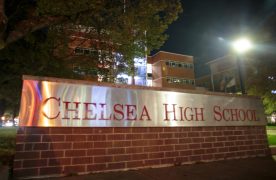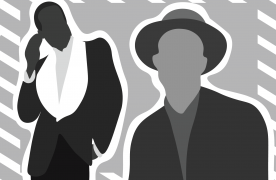Commuters can now familiarize themselves with navigating the tunnels of a virtual Central Artery long before hitting the pavement. The results of years of detours, traffic delays and tax dollars can now be visible on the Web, with the Big Dig approaching its projected conclusion.
A collaborative effort between faculty and students in the engineering and psychology programs at the University of Massachusetts at Amherst, led by Professor of Engineering Donald Fisher, created a virtual tour of what the finished Central Artery project will look like.
The virtual tour, located at www.ecs.umass.edu/hpl/, allows users to ‘drive’ through the completed Central Artery tunnel sections of Interstate 93 North and South, and Interstate 90 East (the Massachusetts Turnpike) from the Prudential Center under the Four Points Channel to the entrance of the Ted Williams Tunnel.
The simulation is complete with proper road markings, signs and barriers, all intended to give a realistic glimpse of what driving in Boston will be like at the completion of the Big Dig.
The Massachusetts Highway Department initially approached Fisher with the idea of creating a software that would explore the use of alternative road signs in the tunnel portions of the Central Artery, he said.
‘Traffic engineers in the Massachusetts Highway Department said the simulation could be used to evaluate signage needs,’ Fisher said.
According to Fisher, the problem Big Dig officials ran into was the lack of space for road signs.
Unfamiliar roads, along with new types of road signs, were feared to create extremely hazardous driving conditions.
‘[The Big Dig] is some of the most complex roadway in the country,’ Fisher said. More problems could arise for drivers when ‘signs that are normally used, aren’t used.’
While the original goal of the simulation was to explore alternative signs, as work on the project continued, Fisher realized there was another benefit to his simulation; it could be used to help drivers.
Fisher and his colleagues at UMass decided to ‘place a non-interactive version of the tour on the internet to familiarize drivers with the signage,’ he said. The web edition of the tour will allow people to preview driving in Boston with their usual routes unavailable.
‘It’s helpful because you can’t go the same ways [as before],’ Fisher said.
Fisher said this added benefit should prove very useful for drivers.
‘It would behoove everyone to take the tour’ said Fisher, who hopes that ‘all drivers, everyone in Boston, will take a few minutes to review the exits.’
With this simulation, the problems of driving on unfamiliar roads with new types of signs, could potentially be alleviated.
‘There is a danger if you don’t see your exit until the last minute,’ Fisher said.
The original goal of seeking alternative signs in the tunnels also appears to be a success, according to Fisher.
‘At least on the simulator, drivers performed much better with the alternatives than they did with the signs as originally proposed,’ Fisher said. ‘Fewer drivers missed their exits with the modified signs.’
The next big portion of the Big Dig scheduled to open is the section of the Massachusetts Turnpike connecting with Logan Airport, according to the project’s website. After a glitch in a computer safety program, Smart Highway, delayed the opening of this section, the tunnel is scheduled to open on Jan. 17. The Leonard P. Zakim Bunker Hill Bridge is scheduled to open in February 2003, the website said.
The Big Dig is now 86 percent complete and is scheduled for completion in December 2004, according to the Big Dig’s website.
This is an account occasionally used by the Daily Free Press editors to post archived posts from previous iterations of the site or otherwise for special circumstance publications. See authorship info on the byline at the top of the page.












